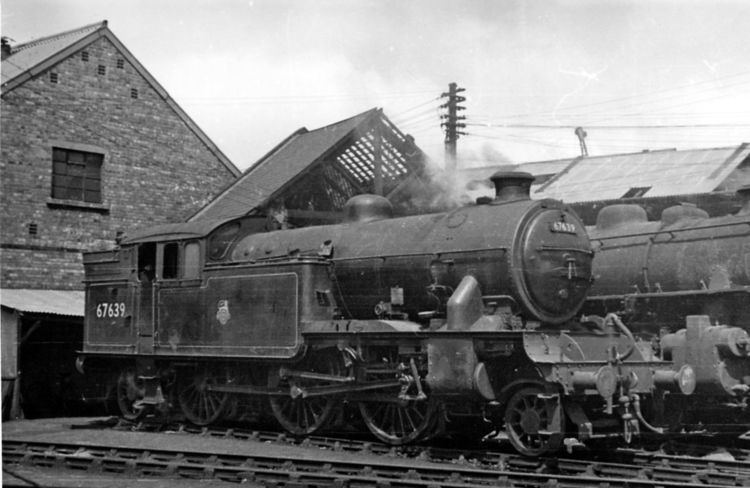Power type Steam Total produced V1: 82
V3: 10 UIC class 1′C1 h3t | Builder Doncaster Works Configuration 2-6-2T | |
 | ||
Build date V1: 1930–39
V3: 1939–40 | ||
The London and North Eastern Railway (LNER) Class V1 and Class V3 were two classes of related 2-6-2T steam locomotive designed by Sir Nigel Gresley. A total of 82 V1s were built with 71 being rebuilt into the higher pressure V3s with an additional ten being built as V3s from the final batch of V1s. The V3 was a development of the V1 with increased boiler pressure and a resultant increase in tractive effort.
Contents
Development history
The development of large tank engines was somewhat delayed by problems on the Southern Railway following the Sevenoaks derailment thought to have been caused by the instability of the large K class 2-6-4 tanks. Gresley carried out stability tests on one of these locomotives and finding no trouble and without further delay produced his sophisticated V1 class suburban tank in 1930. This incorporated his 3-cylinder system and was the first example of all three cylinders and valve chests being incorporated into a single steel casting; this arrangement was used for the P2 Cock o' the North and the subsequent V2, K4 and V4 types.
Construction history
A total of 71 V1s were built at Doncaster from 1930.
Operational history
They were first used in Scotland on the Glasgow-Edinburgh - Helensburgh services. One, no 2911, was also tried in 1931 with excellent results on the Hitchin-London trains before returning to Scotland.
Later development of the V3
From 1939, with working pressure increased to 200 psi gave higher power and better acceleration. A number of V1s were rebuilt to conform. French-style hopper type coal bunker were also fitted. By 1956 there were 57 V1 and 35 V3 types in service, many on Newcastle-Middlesbrough services.
During World War II a number were transferred to help with the heavy wartime loads from the Royal Ordnance Factory at Thorpe Arch until the end of the war.
The V1 and V3s were comparatively powerful engines suited to heavy and tightly-timed suburban workings. As such they saw service on suburban services around Glasgow and Edinburgh. Several were also maintained at Hull for hauling suburban and branch-line workings in the area.
Some of the class were displaced by newer and more powerful Thompson L1 class. Withdrawals began in 1960, with the V1s being disposed of by 1962 and the V3s by 1964, as diesel multiple units took over increasing numbers of suburban services, and branch line workings became fewer as lines closed or were dieselised.
None of either class survived into preservation. However, the A1 Steam Locomotive Trust have announced that after the completion of no. 2007 Prince of Wales, they would start construction on a new V4 followed by a new V3.
Accidents and incidents
Models
Bachmann produce models of both the V1 and V3 in 00 gauge in LNER green, BR Apple green and BR lined black.
